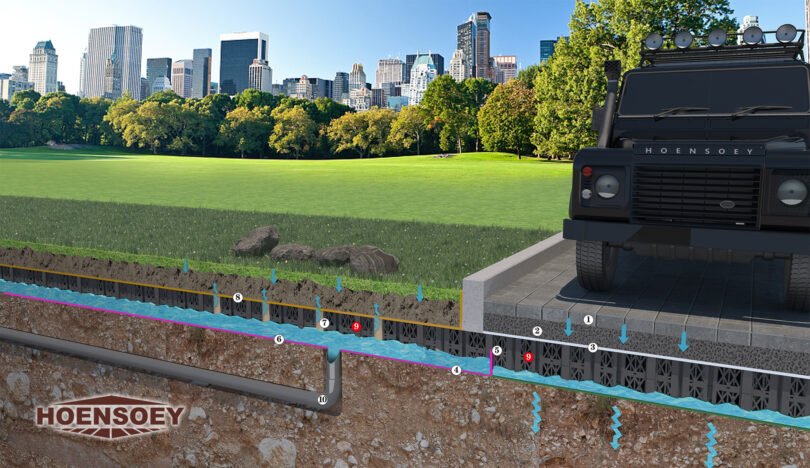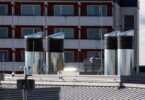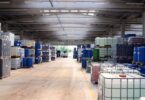Urban areas face increasing challenges related to stormwater management and the need for sustainable water practices. Sustainable Urban Drainage Systems (SUDS) have emerged as effective solutions to mitigate flooding, reduce pollution, and enhance urban resilience. This article explores the concept of SUDS and highlights the crucial role of HOENSOEY CELLS, an innovative stormwater management technology, in achieving sustainable urban water management.
Introduction:
Rapid urbanization has led to significant changes in the natural water cycle, resulting in increased flooding, water pollution, and strain on urban infrastructure. To address these challenges, sustainable approaches to urban water management have gained prominence. Sustainable Urban Drainage Systems (SUDS) offer a holistic and environmentally-friendly approach to managing stormwater runoff. This article focuses on the importance of SUDS and highlights the specific contribution of HOENSOEY CELLS in achieving sustainable urban water management.
Understanding Sustainable Urban Drainage Systems (SUDS):
SUDS are a collection of techniques and practices designed to mimic natural water processes, reduce the impact of urban development on water resources, and enhance water quality. They aim to manage stormwater at its source, promote infiltration, and provide effective drainage while considering environmental and social factors. Key components of SUDS include permeable pavements, green roofs, rain gardens, and detention ponds.
The Importance of HOENSOEY CELLS in Sustainable Drainage:
HOENSOEY CELLS are innovative and ultra-shallow geocellular storage modules designed to optimize stormwater management. They offer unique features that enhance the performance and sustainability of SUDS. The self-interlocking buckles and hexagonal design provide impressive compressive strength, ensuring the stability and durability of the system. HOENSOEY CELLS effectively store, infiltrate, and manage stormwater, reducing the burden on traditional drainage systems and mitigating the risk of flooding.
Advantages of HOENSOEY CELLS in Urban Water Management:
- Improved Stormwater Storage and Infiltration: HOENSOEY CELLS provide a high-capacity storage solution, allowing efficient storage and controlled release of stormwater. The cells promote infiltration, reducing the load on drainage networks and preventing localized flooding.
- Reduction of Flood Risk and Peak Flow Management: By attenuating and controlling stormwater runoff, HOENSOEY CELLS help manage peak flow during heavy rain events. This reduces the risk of flooding downstream and minimizes the strain on existing infrastructure.
- Enhancing Water Quality: HOENSOEY CELLS play a vital role in improving water quality by trapping sediment, nutrients, and pollutants from stormwater runoff. This helps protect downstream water bodies and supports a healthier aquatic ecosystem.
- Integration with Green Infrastructure: HOENSOEY CELLS can be seamlessly integrated with various green infrastructure components, such as rain gardens and bioswales. This integration enhances the ecological benefits of SUDS, including habitat creation, urban greening, and biodiversity promotion.
Case Studies: Successful Implementation of HOENSOEY CELLS:
Highlighting real-world examples of HOENSOEY CELLS applications in urban areas, showcasing their effectiveness in managing stormwater, reducing flooding risks, and improving water quality. Case studies can include projects from different regions, demonstrating the versatility and adaptability of HOENSOEY CELLS.
Challenges and Considerations in Adopting HOENSOEY CELLS:
Addressing the potential challenges associated with adopting HOENSOEY CELLS, such as installation, maintenance, cost-effectiveness, and stakeholder engagement. Discussing ways to overcome these challenges through proper planning, collaboration, and knowledge sharing among stakeholders. This includes involving city planners, architects, engineers, and environmental experts in the decision-making process to ensure the successful implementation of HOENSOEY CELLS. Additionally, fostering partnerships with local communities, water management agencies, and government bodies can help secure funding and support for sustainable drainage projects.
Furthermore, conducting research and monitoring the performance of HOENSOEY CELLS installations can provide valuable data on their long-term effectiveness, cost savings, and environmental benefits. Sharing this information with other cities and organizations can facilitate knowledge exchange and encourage widespread adoption of sustainable drainage practices.
By addressing installation techniques, implementing effective maintenance strategies, and exploring innovative financing models, stakeholders can overcome potential barriers and make the use of HOENSOEY CELLS more accessible and economically viable. This collaborative approach will ensure the long-term success and sustainability of urban drainage systems using HOENSOEY CELLS.
In conclusion, collaboration among stakeholders is essential to overcome challenges related to HOENSOEY CELLS adoption. By fostering partnerships, sharing knowledge, and involving relevant stakeholders, we can maximize the benefits of sustainable urban drainage systems and create resilient cities that effectively manage stormwater while promoting environmental sustainability.





Leave a Comment
You must be logged in to post a comment.